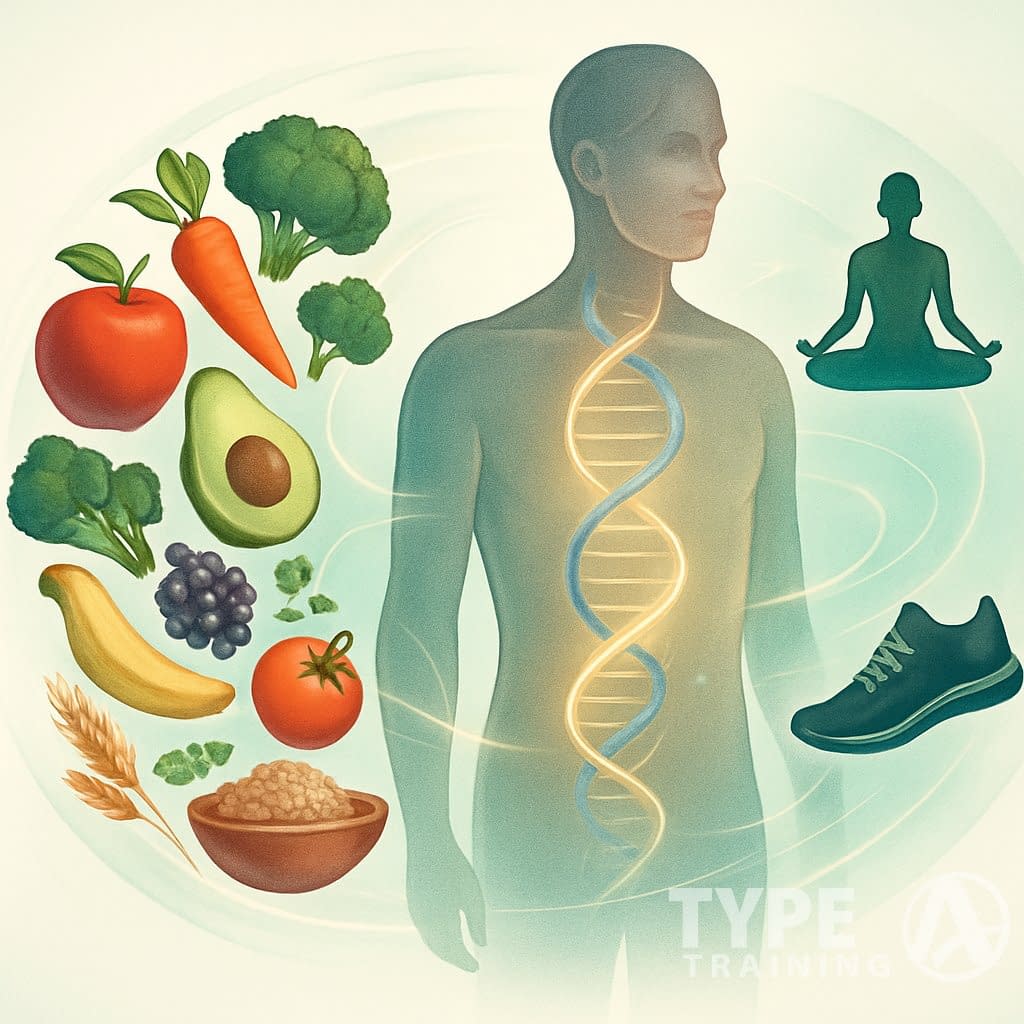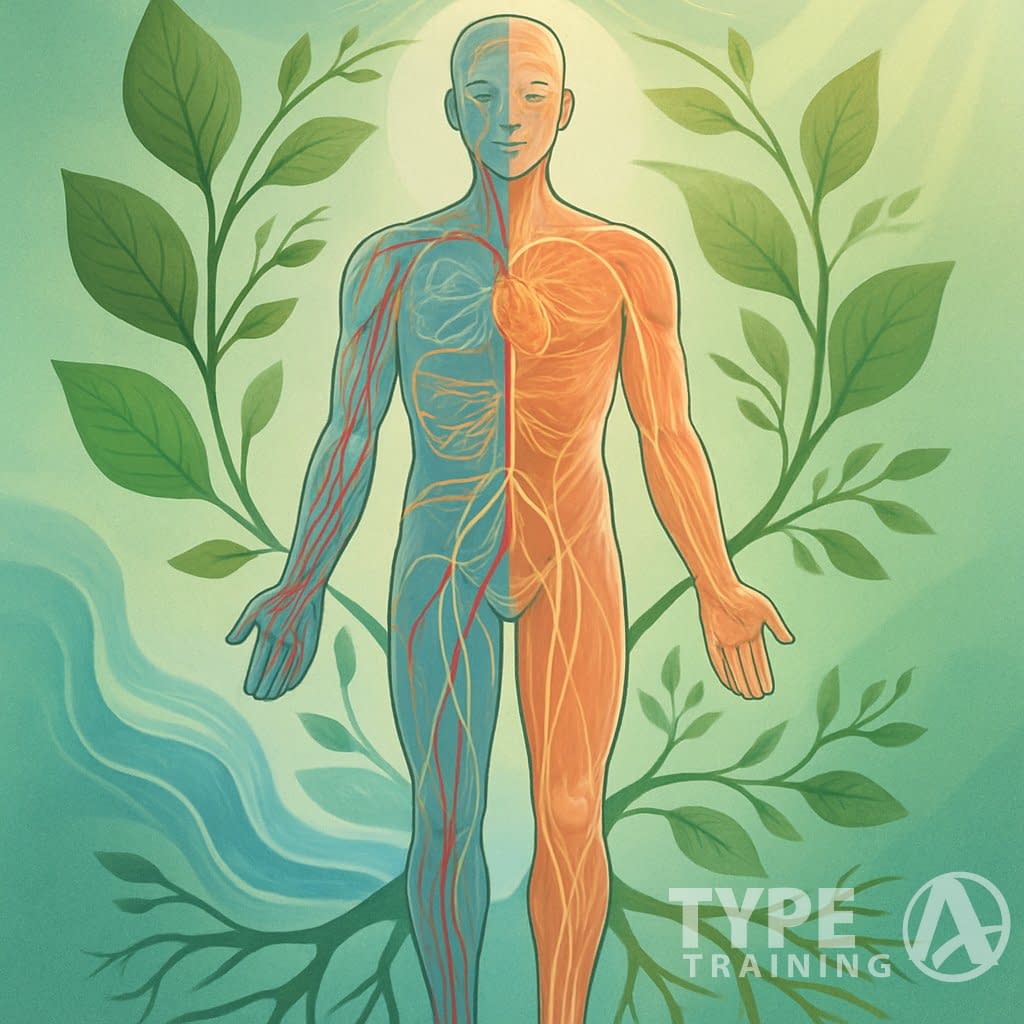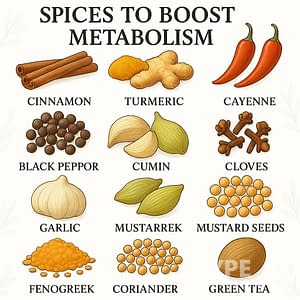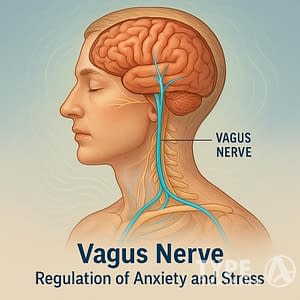Our bodies speak a silent language that hints at our internal health. The clarity of our skin or the brightness in our eyes can sometimes reveal how our organs function and even reflect our emotional wellbeing.
The physical body acts like a map of interconnected systems. Visible characteristics often signal deeper internal conditions that deserve some attention and care.

Ancient healing traditions noticed these connections long ago, and now modern science is confirming many of their observations. Traditional Chinese Medicine (TCM) links facial features to specific organs, while Ayurveda looks at body types to understand health tendencies.
Popular posts:
Researchers studying the mind-body connection have found that thoughts and emotions can show up as physical symptoms—or sometimes, strengths.
When you notice changes in your appearance or how you feel, you get valuable information about what your body might need. This holistic perspective recognizes that your mental attitudes and beliefs can really impact your physiological processes.
It all lays a foundation for comprehensive approaches to wellness that address both what you see and what’s going on underneath.
Key Takeaways
- Your external physical characteristics can offer real insights into your internal health systems and emotional states.
- The connection between mind and body creates measurable effects, where thoughts and feelings influence your physical wellbeing.
- You can use awareness of these bodily signals as feedback for making lifestyle changes that support your overall health and vitality.
The Mind-Body Connection: Foundations and Modern Insights

The mind and body interact in surprisingly complex ways that shape our health. This relationship stretches across ancient healing traditions and modern science, revealing deep links between our thoughts, emotions, and physical wellbeing.
Neuroscience Perspectives on Holistic Health
Recent neuroscience research backs up what many people have felt for ages—your thoughts and emotions really do affect your physical health. Studies show that psychological states can change your health through several pathways.
Your brain talks to your immune system using chemical messengers like neurotransmitters and hormones. When you’re stressed, your body releases cortisol and adrenaline, which can suppress immune function over time.
Neuroplasticity—your brain’s ability to reorganize itself—plays a big role here. Practices like meditation and mindfulness can actually change brain structure, improving attention, emotional regulation, and stress management.
Brain imaging now lets scientists see how mental practices affect different brain regions. It’s pretty wild to see visible proof of the mind-body connection in action.
Traditional Chinese Medicine and Ayurveda in Body Analysis
Traditional Chinese Medicine (TCM) and Ayurveda both built detailed systems for reading the body’s external features as reflections of internal health. They did this thousands of years ago, long before MRI scans or lab tests.
In TCM, your body’s meridian system links facial features, tongue appearance, and pulse qualities to organ functions and energy balance. Practitioners watch for these external signs to understand internal imbalances.
For example, dark circles under your eyes might signal kidney weakness. Ayurveda sorts people into three doshas (Vata, Pitta, and Kapha), using physical traits like body frame, skin texture, and even fingernail shape to get clues about your constitution and possible health issues.
Both systems see the mind-body connection as fundamental. Emotional states create physical patterns, and sometimes it’s the other way around.
Ancient Wisdom Meets Modern Science
When ancient healing traditions merge with modern research, we get some pretty powerful approaches to health. This blend validates a lot of traditional practices and helps us understand how they might actually work.
Meditation and yoga, once considered spiritual, now have scientific backing for reducing inflammation, improving heart health, and boosting immune function.
Modern practitioners often mix techniques from different traditions. You might get acupuncture (TCM) alongside nutritional advice based on metabolic testing, or mindfulness practices from Buddhist tradition.
The field of psychoneuroimmunology looks at how your psychological processes influence your nervous and immune systems. It’s giving us a scientific framework for understanding the mechanisms behind many traditional healing approaches.
It can really help to find qualified health professionals who understand both traditional wisdom and modern science. They can help you create a truly integrated health plan.
External Physical Markers and Their Internal Reflections
Your body communicates its internal state through visible external signs. These physical markers act as windows into how your internal systems are working and can offer clues about underlying health issues.
Skin mirrors the liver
The look of your skin often says a lot about your liver. If your liver struggles to filter toxins, skin problems might show up as your body tries to get rid of waste in other ways.
Yellow skin or eyes (jaundice) means bilirubin is up, pointing to liver dysfunction. This happens when the liver can’t process this waste product properly.
Dryness, itching, or rashes might mean your liver isn’t managing fats and nutrients effectively. Your skin needs nutrients processed by the liver to stay healthy.
Dark spots or patches can pop up when detox pathways aren’t working well. The liver usually neutralizes compounds that could otherwise cause discoloration or irritation.
Common skin-liver connections:
- Acne flares up during liver stress
- Spider angiomas (tiny, spider-like blood vessels)
- Palmar erythema (red palms)
Posture reflects fascia
The way you stand and sit shows the state of your fascia—the connective tissue running throughout your body. This tissue impacts structural alignment and affects how you move.
Fascial restrictions can develop from injury, inflammation, or even chronic slouching. Once they’re there, these restrictions pull your body out of alignment, creating visible postural changes.
Shoulders that roll forward might mean chest fascia is tight. An exaggerated lower back curve often comes from tight hip flexors. These patterns build up as fascia adapts to your regular positions and stresses.
Fascial restrictions can even affect your brain function and internal health by changing nerve signals. Fascia contains loads of nerve endings that talk to your central nervous system.
Healthy vs. restricted fascia signs:
| Healthy Fascia | Restricted Fascia |
|---|---|
| Balanced posture | Asymmetrical stance |
| Fluid movement | Stiff, limited range |
| Even weight distribution | Weight shifted to one side |
| Pain-free movement | Movement discomfort |
Fat distribution follows hormonal state
Where your body stores fat can say a lot about your hormones. Different hormones push fat to certain body areas.
Extra belly fat often means cortisol (your main stress hormone) is high. Chronic stress can direct fat storage to your midsection, right around your organs.
Women with more estrogen usually store fat in their hips and thighs. After menopause, as estrogen drops, fat often shifts to the abdomen, looking more like the male pattern.
Insulin resistance causes fat to pile up around the waist and upper back. That “buffalo hump” at the base of the neck can signal metabolic issues, even diabetes risk.
Thyroid imbalances show up in fat distribution, too. Hypothyroidism often causes overall weight gain that doesn’t respond to diet and exercise, but the distribution stays pretty normal.
Jaw structure reflects airway health
The shape and development of your jaw ties closely to breathing patterns and airway function. A well-formed jaw supports good breathing, day and night.
Narrow jaws with crowded teeth often point to mouth breathing during childhood. This habit changes facial growth, leading to certain features:
- Longer face
- Recessed chin
- Crowded teeth
- High, narrow palate
These changes can impact your overall health by affecting sleep quality. Restricted airways might cause sleep-disordered breathing, like sleep apnea.
You can sometimes spot breathing issues just by looking at facial features. Forward head posture, for example, often develops as a way to open up restricted airways.
Proper jaw development needs nasal breathing, good tongue posture, and correct swallowing patterns during childhood and teen years. These habits guide facial bone growth toward a healthier airway.
Fluid retention reflects lymphatics
Swelling in your body shows how well your lymphatic system is moving fluid and waste. Unlike blood, this system doesn’t have a central pump—it depends on your movement and muscle contractions.
Puffy eyes in the morning often mean your lymphatic flow slowed down overnight. This swelling usually goes away as you get up and move around, letting gravity help out.
Swollen ankles that stick around point to sluggish lymphatic function in your legs. It gets worse if you sit or stand for long periods, but improves with movement or putting your feet up.
Your lymphatic health links directly to body awareness and physical symptoms. When it’s working well, this system helps your immune function and keeps fluid balanced throughout your body.
Supporting lymphatic flow:
- Regular movement or exercise
- Staying hydrated
- Dry brushing
- Alternating hot and cold therapy
- Manual lymphatic drainage massage
Tongue coating mirrors the microbiome
The appearance of your tongue can tell you a lot about your digestive system and gut microbiome.
Traditional medicine systems have leaned on tongue assessment as a diagnostic tool for centuries.
A thin, white coating is usually normal.
Thicker coatings or odd colors often mean digestive imbalances or microbial overgrowth.
Yellow coating? That typically points to heat or inflammation in the digestive tract.
You might see this with acid reflux, gastritis, or if your diet’s heavy on inflammatory foods.
Geographic tongue—those smooth patches—often links to food sensitivities or nutrient gaps.
These shifting patterns show how your body handles different substances.
The back of your tongue connects most to your lower digestive organs.
Changes here might hint at colon or small intestine issues, not just stomach trouble.
For the best read, check your tongue in the morning before eating, drinking, or brushing.
Emotional States Expressed Through the Body
Our emotions don’t just stay in our heads—they show up in our bodies, too.
The body acts like a canvas, painting out tension, posture shifts, and all sorts of physiological patterns.
Anxiety, Stress, and Somatic Symptoms
Anxiety often shows itself through physical symptoms. Your nervous system ramps up, and you might notice shallow breathing, a tight chest, or a racing heart.
These reactions are real—not just in your imagination. They’re actual physiological responses triggered by your body’s stress response.
Your digestive system especially reflects anxiety, causing:
- Stomach knots or “butterflies”
- IBS flare-ups
- Appetite changes
- Nausea or digestive discomfort
Chronic stress can give you headaches, tense muscles (especially shoulders and neck), and mess with your sleep.
Your immune system takes a hit, too, so you might notice you get sick more often when stress drags on.
The vagus nerve is a big player here, acting as a highway between your emotions and body.
If you start noticing these signals, you can catch stress early and try out some stress-management tricks.
Anger and Chronic Tension Patterns
Anger leaves its mark on your body—even after the feeling fades.
You might clench your jaw, grind your teeth at night, or feel constant tightness in your neck and shoulders.
Unprocessed anger often shows up like this:
- Clenched jaw or teeth grinding
- Tight shoulders and neck muscles
- Headaches, especially tension headaches
- High
blood pressure - Digestive issues
When anger builds up, your body can get stuck in these tension patterns.
Traditional Chinese Medicine, for example, connects anger to liver function and harmony.
Try regular body scans. They can help you spot where you’re holding anger physically.
Once you know, you’re already on your way to releasing that tension with targeted relaxation.
Trauma and Emotional Release
Trauma doesn’t just vanish—it sticks around in your body, even if memories fade.
Research suggests traumatic experiences get stored in body tissues, creating tension patterns or reactions that might pop up years later.
Your body might hold trauma by:
- Chronic muscle tightness
- Limited joint movement
- Weird breathing patterns
- Numb or hypersensitive spots
Emotional release techniques take this connection seriously.
Practices like therapeutic yoga, somatic experiencing, and trauma-informed bodywork help let go of stuck emotional energy.
They give your body a safe space to finish interrupted stress responses.
Sometimes, that release feels like warmth, tingling, or an emotional wave—signs your nervous system is resetting.
Internal Systems and Their Visible Manifestations
Your body sends out signals about what’s going on inside, whether you notice or not.
These outward signs give you clues about your health status and what’s happening beneath the surface.
Cardiovascular Signs in External Appearance
Your fingernails can say a lot about your heart health.
Bluish nails might mean poor oxygen circulation, while clubbing (big, curved fingertips) can point to long-term heart or lung issues.
These can be early hints of heart disease.
Look at your face, too. Some studies link earlobe creases to coronary artery disease.
Yellow fatty deposits around your eyes (xanthelasma) might mean high cholesterol.
Your skin tells a story as well. If you look pale, it could be anemia or weak circulation.
A yellowish tint can signal liver trouble. Small red spots (petechiae) might mean blood vessel or clotting issues.
Digestive Health and the Gut-Brain Axis
Digestive health often shows up on the outside.
A coated tongue, stubborn bad breath, or frequent mouth sores can mean digestive imbalances.
These symptoms highlight the interconnectedness of your body systems.
The gut-brain axis is the communication network between your digestive and nervous systems.
If this link’s out of whack, you might get digestive issues, mood swings, anxiety, or brain fog.
Skin problems like rosacea, eczema, and acne can reflect gut inflammation.
Where you carry weight—especially extra belly fat—can point to metabolic issues tied to digestive health and higher risk for type 2 diabetes.
Inflammatory Clues and Chronic Illness
Chronic inflammation likes to leave clues on the outside.
Puffy eyes, swollen joints, and constant skin redness can mean your body’s in inflammation mode.
Dark circles under your eyes might mean allergies, sleep trouble, or kidney issues—all possibly linked to inflammation.
Skin rashes that come and go could signal autoimmune conditions, where your immune system targets your own tissues.
Signs of early aging—wrinkles, age spots, thinning hair—can point to cellular damage from chronic inflammation.
This same inflammation can raise your cancer risk.
Check your nails for ridges, pitting, or odd growth. These might mean nutritional gaps or inflammatory problems affecting your well-being.
Resilience and Healing: Body as Feedback
Your body acts as a feedback system, always sending you signals about your health and resilience.
The way you respond to stress and recover from challenges says a lot about your overall well-being.
Stress Physiology: Cortisol and the Autonomic Nervous System
Stress flips a switch in your body. Cortisol, the so-called “stress hormone,” jumps up to get you ready for fight-or-flight.
This hormone touches nearly every system in your body.
You can spot cortisol‘s effects in things like a faster heartbeat, tense muscles, and sometimes changes in your skin.
These aren’t random—they’re direct signals from your autonomic nervous system.
If stress hormones stay high, you might notice:
- Sleep troubles
- Digestive upset
- Tense shoulders or jaw
- Getting sick more often
Your breathing pattern gives away a lot. Quick, shallow breaths mean your sympathetic nervous system is running the show. Deep, slow breaths? That’s your parasympathetic system kicking in for recovery.
Resilience Markers in Physical Health
Resilience shows up in how your body bounces back after stress or illness.
Resilient people often have clear physiological patterns that support their health.
You can see your recovery in:
Quick vital sign normalization: How fast your heart rate and
Sleep quality: Deep, refreshing sleep means your body can repair and reset.
Immune response: A resilient body responds to threats without going overboard.
Embodied healing practices like movement therapy can boost these markers by building somatic intelligence—that gut sense of how your body reacts to the world.
Your skin, posture, and energy all give you feedback about your resilience. Paying attention to these can help you tweak habits and support your healing.
Holistic Approaches to Well-Being and Balance
Holistic wellness pulls together all parts of health—mind, body, and spirit—aiming for balance instead of perfection.
These practices honor the deep connections between every aspect of well-being and invite you to pay mindful attention to each area.
Mindfulness and Meditation for Emotional Regulation
Mindfulness practices can be powerful for emotional regulation. They create a bit of space between your thoughts and your reactions.
When you practice mindfulness regularly, you start to observe emotions without jumping to judgment. It’s not about shutting feelings down, just letting them exist for a moment before you respond.
Try starting with just five minutes a day, focusing on your breath. Notice when your mind drifts, then gently bring your focus back—no need to scold yourself.
Research suggests meditation can physically change your brain, especially in areas that manage stress. Over time, this helps you respond to challenges with more calm and clarity.
Simple Daily Mindfulness Practices:
- Morning body scan when you wake up
- Mindful eating—really tasting each bite
- Three-minute breathing breaks between tasks
As you get better at noticing thoughts instead of getting tangled in them, your emotional balance often improves.
Yoga and Breathwork in Integrative Practice
Yoga bridges movement with breath awareness, creating a mind-body connection that’s hard to find elsewhere. This integrative approach can release physical tension and calm your nervous system at the same time.
Different breathwork techniques serve unique purposes in a wellness routine:
| Technique | Primary Benefit | Best Time to Use |
|---|---|---|
| Box Breathing | Stress reduction | During anxiety spikes |
| Ujjayi Breath | Focus enhancement | During yoga practice |
| 4-7-8 Breathing | Sleep preparation | Before bedtime |
You don’t have to be flexible to get something out of yoga. It meets you wherever you are, gradually helping you increase your range of motion and patience with your body.
Regular practice opens up a dialogue between your mind and body. You start to notice tension before it becomes a real problem.
Self-Awareness Techniques and Body Communication
Your body’s always sending signals, but it’s easy to ignore them. Developing self-awareness means tuning back into this channel.
Try body mapping: spend five minutes scanning from head to toe, noticing tension, comfort, or anything odd. Over time, you’ll spot patterns in how your body reacts to different situations.
Holistic health approaches really emphasize this kind of awareness. When you catch early warning signs, you can step in before things snowball.
Body Communication Signals to Monitor:
- Digestive changes when stressed
- Energy ups and downs during the day
- How you sleep after certain activities
- Muscle tension connected to emotions
Your body’s wisdom gets easier to access when you make time to listen—and then actually respond with some self-care.
Nutrition, Lifestyle, and Epigenetic Influences
What you eat and how you live can visibly change your body. These shifts go way beyond just weight—they affect your genes, your mind, and your energy.
Nutrition’s Role in Physical and Mental Health
What you eat shapes how you look and feel. Nutrition is a key environmental exposure that impacts health through epigenetic changes, starting from birth.
Your food choices show up in your skin, hair, nails, and energy. Dull skin or brittle nails can be early warning signs before bigger health issues pop up.
Mental health also really responds to what you eat. Foods with omega-3s, B vitamins, and antioxidants can boost mood and brain function. When you get enough of these, you might notice better concentration and steadier emotions.
Your genetics play a role in how you process nutrients. That’s nutrigenetics in action.
Epigenetics and Lifestyle Choices
Epigenetics is all about how your daily choices can turn genes on or off—without changing your DNA. Your habits leave molecular “fingerprints” that show up in your appearance.
Good sleep, stress management, and exercise all trigger epigenetic changes that shape your health. Poor sleep can show up as dark circles or dull skin, while chronic stress may speed up aging and hair graying.
The first 1000 days of life are especially important—nutrition and environment during this time set patterns that last for decades. Early influences might affect your risk for weight gain, inflammation, or disease.
Regular movement creates positive epigenetic changes. You might see this in better posture, muscle tone, or healthier skin.
Mindful Eating for Health and Balance
Mindful eating is about really paying attention to your food—how it tastes, feels, and how your body responds. This practice can help you notice which foods lift you up and which ones drag you down.
When you eat mindfully, you tend to pick foods that actually nourish you. Over time, you might notice clearer skin, brighter eyes, and steadier energy.
Balanced meals with veggies, quality protein, and healthy fats support your body’s natural rhythms. These nutrients help with cell repair, hormone balance, and immune strength.
A healthy diet and regular movement work together to boost well-being. You’ll often see the results in your complexion, posture, and a more vibrant look that reflects how you feel inside.
Restoring Wholeness: Strategies for Lifelong Vitality
Getting to optimal health isn’t about chasing perfection. It’s about finding balance, nurturing both mind and body, and sticking with practices that support you for the long haul.
The path to wholeness is intentional, and it’s a process, not a finish line. Sustainable well-being comes from supporting your whole self. Learn more here.
Mindset, Optimism, and Positive Relations
Your mindset really shapes your health. A positive outlook can strengthen your immune system and help you bounce back from illness.
Optimistic folks tend to live longer and deal with fewer chronic conditions. That’s not just wishful thinking—research backs it up.
Building strong relationships matters, too. Meaningful connections lower stress and boost neurotransmitters that promote healing.
Try some of these approaches:
- Write down three things you’re grateful for every day
- Cut back on news if it’s stressing you out
- Make time for friends or family who lift you up
- Practice seeing challenges as chances to grow
Your brain can’t always tell the difference between real and imagined experiences. Visualization techniques can actually help prep your body for healing.
Rehabilitation and Progressive Muscle Relaxation
Physical rehab isn’t just for injuries. It’s about restoring wholeness to your whole system.
Effective rehab brings together movement, breath awareness, and relaxation techniques. Progressive Muscle Relaxation (PMR) can be surprisingly helpful:
- Tense and then release each muscle group, one at a time
- Hold the tension for five to seven seconds
- Let go completely and notice the difference
- Work from your feet up, or head down—your choice
PMR helps lower cortisol and activates your body’s natural relaxation response. It pairs well with mindfulness-based stress reduction, bringing attention to sensations without judgment.
Gentle movement—walking, swimming, tai chi—keeps joints moving and boosts circulation to healing tissues. More on that here.
Building Hope and Life Satisfaction
Cultivating hope is a real, hands-on practice that can shape your health in ways you might not expect. Hope goes beyond just thinking positively—it’s the belief that things really can get better, and the willingness to look for ways to make that happen.
The holistic health model sees life satisfaction as something that grows when you pay attention to your physical, emotional, spiritual, and social needs. It’s not just about one thing—it’s a mix.
- Set small, doable health goals to boost your confidence.
- Figure out what really matters to you, and try to line up your choices with those values.
- Find activities that get you into a “flow”—those moments when you’re totally wrapped up in what you’re doing and it feels meaningful.
- Be gentle with yourself if you hit a rough patch or slip up.
Wholeness isn’t about being perfect. It’s more about bringing all the parts of yourself together, even the messy ones. Honestly, steady, small steps toward balance tend to stick a lot better than wild, all-or-nothing changes.













